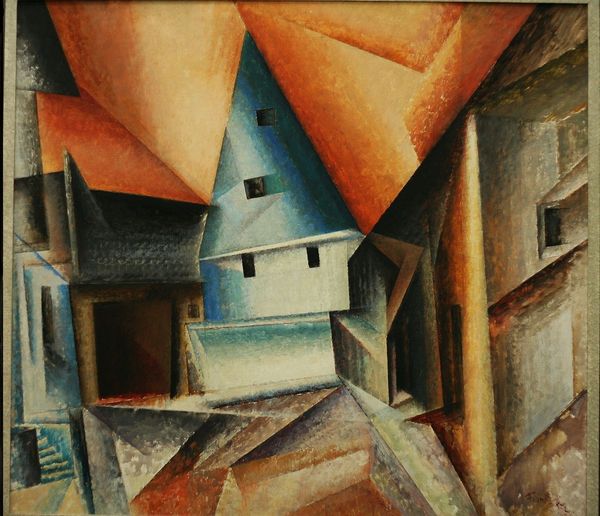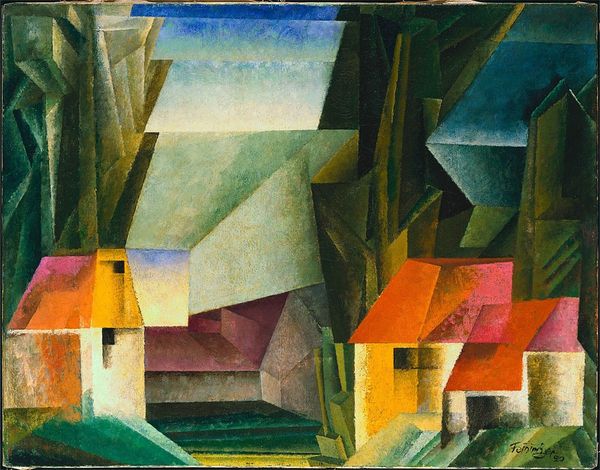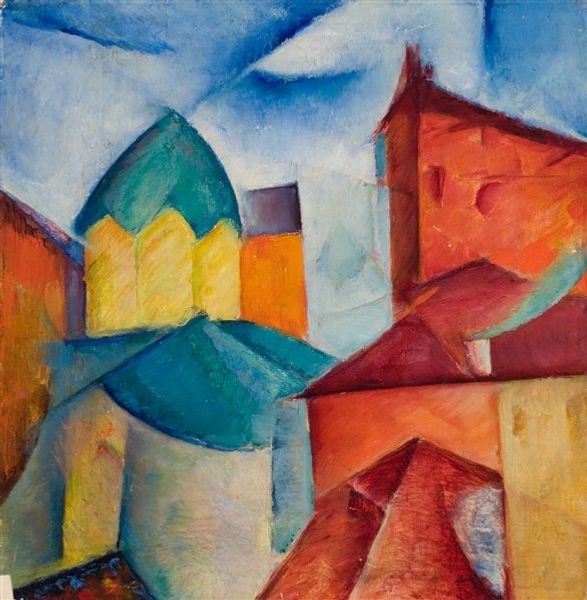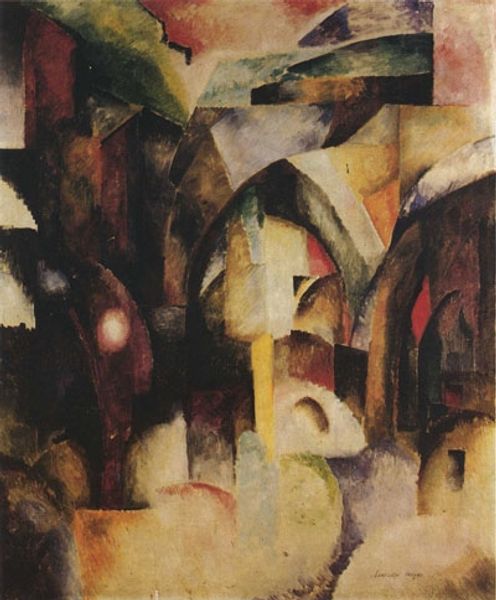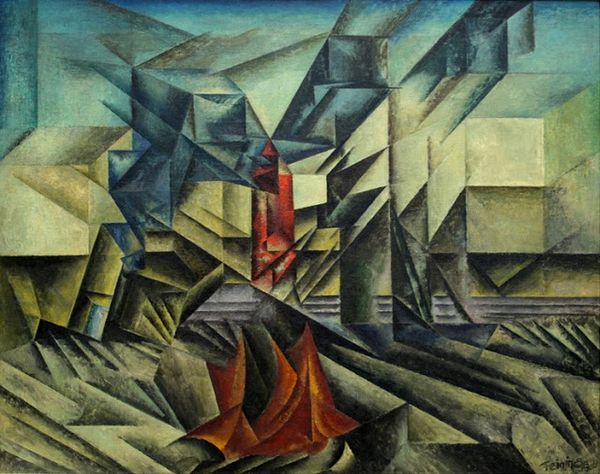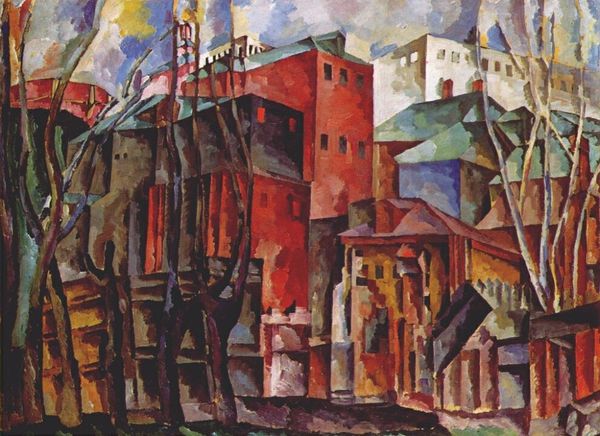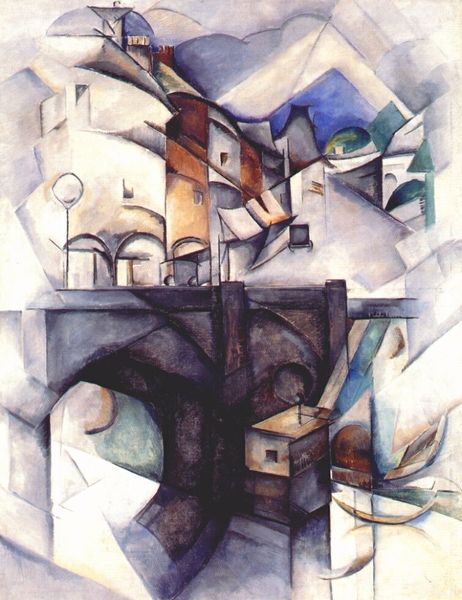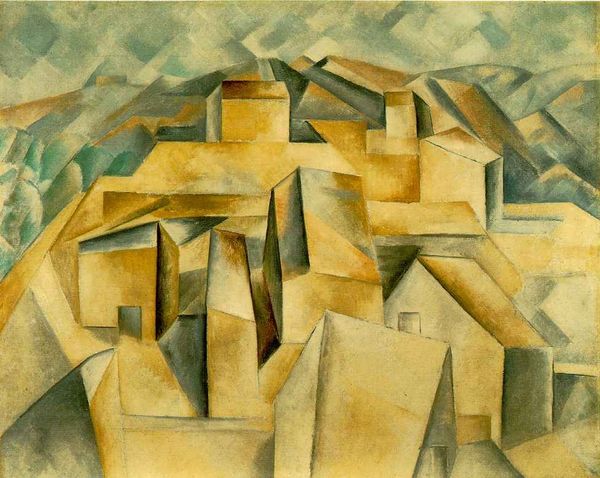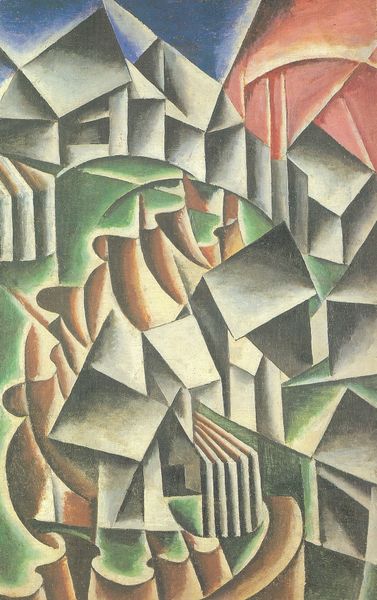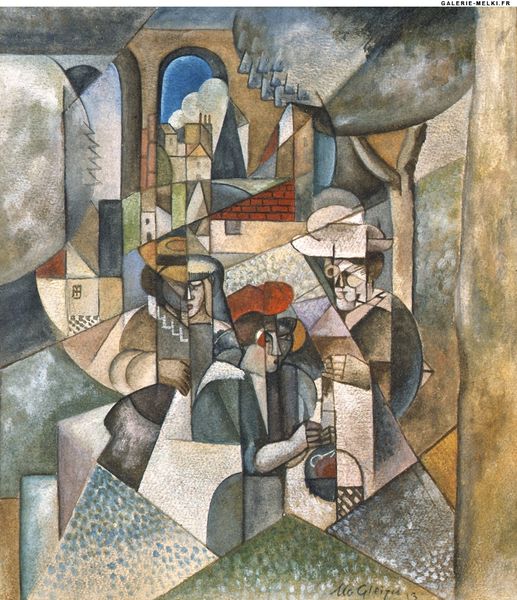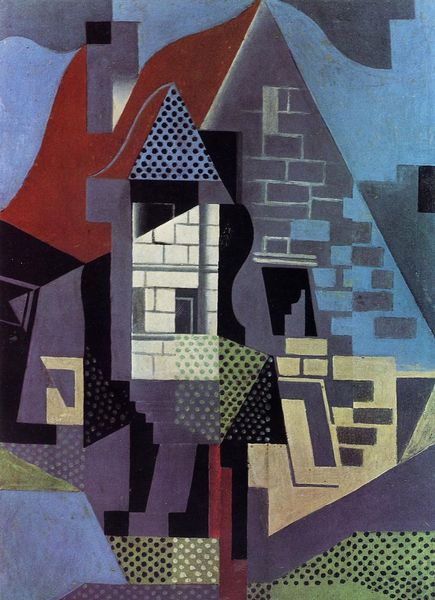
oil-paint
#
cubism
#
oil-paint
#
oil painting
#
geometric
#
expressionism
#
cityscape
#
modernism
Copyright: Public domain US
Curator: Lyonel Feininger's 1920 oil painting, "The Cathedral," strikes me as a somewhat fragmented, almost melancholic cityscape. Editor: I find it rather energetic, a fractured prism of spiritual architecture. The way Feininger constructed this city using planar forms... you can see the hand of Cubism, can’t you? I’m interested in the physical properties of these oil paints, how he builds the cityscape with color to make the viewer question urban materiality itself. Curator: Undoubtedly. But consider the Cathedral. Throughout history, cathedrals are imbued with layers of meaning. Feininger uses it not necessarily as a religious symbol, but as a soaring expression. The swirls overhead seem almost celestial. Editor: But those swirling elements read to me like condensed fumes. Industrial pollution. Expressionism critiquing modernity through its visible cost: damaged skylines. We have to remember how industrial production forever changed our atmosphere and that it required work from many to get it there. Feininger’s technique itself seems critical—thin glazes of oil to let the surface show. Almost like revealing bare building materials to us. Curator: An interesting contrast with stained glass. Which has a lot of historical impact in a building like this, given its tendency to evoke awe or mystery in the religious population. Editor: Exactly. We should focus more on his artistic means of production; through layering of colors he alludes to different types of physical production, whether the making of steel and smoke in city air, or construction of modern, large-scale cathedrals themselves. Curator: I suppose if you consider it like that, the act of artistic creation itself, mirrors the construction Feininger paints. A building, an artwork, it’s all creation... building the image, the scene in layers that convey that idea that you bring up. Editor: And perhaps by dissolving the familiar into angular facets, he encourages the audience to consider who built the foundations of belief, just like modern skylines are being raised by work from those unseen? That is how one starts the construction of cultural memory and urban iconography. Curator: It’s a striking reminder to really *look* at the weight these shared architectural icons carry, or *create.* There's more than what initially meets the eye in how we both create, and observe these landmarks, these shared cultural symbols. Editor: A final reflection that brings process into the viewer's experience of modernity itself.
Comments
No comments
Be the first to comment and join the conversation on the ultimate creative platform.
